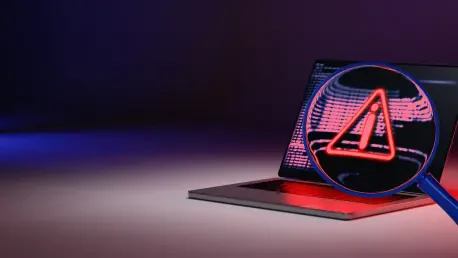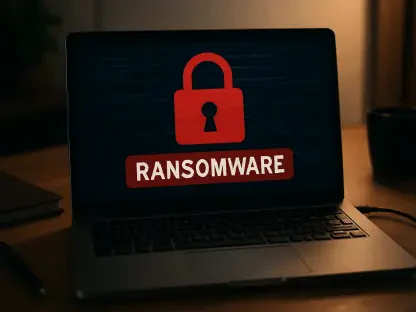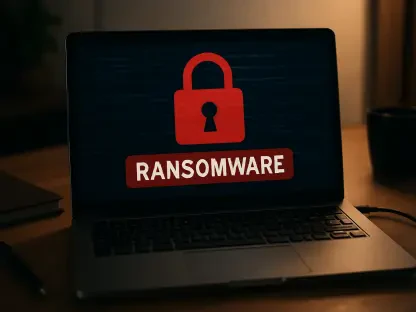In today’s digital landscape, where businesses rely heavily on integrated systems for operational efficiency, a recent critical security vulnerability has emerged in SAP NetWeaver Visual Composer, known as CVE-2025-31324. This flaw, identified as an unauthenticated file upload vulnerability impacting the metadata uploader component, has led to confirmed breaches in sectors such as manufacturing. With a severity score of 10, the issue is undeniably significant, highlighting the potential for exploitation across various industries. CISA has taken note, adding this vulnerability to its Known Exploited Vulnerabilities catalog. More than 7,500 SAP NetWeaver Application Servers are reportedly at risk, according to data gathered by Censys researchers. This alarming revelation has sparked concern among businesses that rely on SAP’s robust framework for their daily operations and strategic initiatives. The question remains whether corporations are adequately prepared to tackle the risks that arise from such critical flaws in their enterprise systems.
Vulnerability Exploitation Dynamics
The exploitation of the SAP NetWeaver flaw, primarily through the use of JSP webshells, has become a notable concern as attackers have demonstrated the capability to upload these shells into publicly accessible directories. Initially, this security issue was confused with an older vulnerability, CVE-2017-9844, until researchers from Reliaquest distinguished it as a separate and significant threat. Rapid7 researchers observed the exploitation beginning on March 27, targeting manufacturing firms most aggressively. The approach involves gaining unauthorized access to affected environments, deploying webshells, and executing malicious commands. This series of actions allows attackers to take considerable control over victims’ systems. Complicating matters is the prevalence of outdated SAP NetWeaver installations, which inherently heighten systems’ susceptibility to such exploits. Many companies haven’t updated their systems due to operational hesitations, reflecting a common dilemma faced by organizations balancing risk management and business continuity.
Impact on Global Enterprises
The global implications of this security flaw are extensive, with Shadowserver having identified 454 vulnerable IPs primarily located in the U.S., India, and Australia. The affected enterprises often utilize Visual Composer for developing business application processes, emphasizing its role as an indispensable tool for efficient operations. SAP disclosed this vulnerability to its clients in early April, prompting a rapid response that culminated in an emergency patch released on April 24, surpassing original end-of-month schedules. Reports from security firms like Mandiant and insights from notable industry figures such as CTO Charles Carmakal underscore the widespread exploitation, initially recognized in mid-March. The rapid progression into widespread exploitation calls for an urgent reassessment of system security postures. Businesses, particularly those reliant on SAP for critical functions, face significant threats if proactive measures are not swiftly implemented to address them.
Strategic Responses and Future Considerations
Despite the gravity of the threat from the SAP NetWeaver flaw, many organizations hesitate to apply necessary updates due to the integral role of these systems in managing business-critical applications. Visual Composer, although not installed by default, remains an essential component in 50-70% of Java systems. This widespread presence necessitates vigilant monitoring and timely responses to emerging threats. Prompt implementation of the emergency patch released by SAP is critical, as is the continuous evaluation of digital infrastructure’s security measures. As businesses navigate the challenges presented by vulnerabilities like CVE-2025-31324, a broader strategy that encompasses frequent system updates, comprehensive threat assessments, and enhanced cybersecurity protocols must be prioritized. Instituting robust safeguards ensures resilience against evolving cyber threats, thereby safeguarding operational integrity and stakeholder trust in a hyper-connected business environment governed by digital interactions.
Achieving Cyber Resilience
In our digitally dominated era, where businesses increasingly depend on integrated systems for efficiency, a significant security vulnerability named CVE-2025-31324 has surfaced in SAP NetWeaver Visual Composer. This flaw, categorized as an unauthenticated file upload vulnerability within the metadata uploader component, has resulted in documented breaches in industries like manufacturing. With an alarming severity score of 10, the vulnerability underscores a high potential for exploitation across diverse sectors. CISA has acknowledged the threat by including it in their Known Exploited Vulnerabilities catalog. Research by Censys indicates that over 7,500 SAP NetWeaver Application Servers could be compromised. This startling news heightens worry among companies that depend on SAP’s comprehensive framework for daily operations and strategic ventures. It raises the pressing issue of whether firms are truly equipped to address the risks posed by such critical flaws in their enterprise systems.









